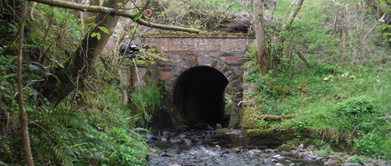Frequently Asked Questions
Below are a number of frequently asked questions regarding ecology, protected species and the requirements for surveys.
Why do I require an ecological survey?
Ecology surveys are required to ensure that all protected species or sites are identified, that there is no impact on a species or site during a development or other work, and that legislation covering species and sites is not breached. The protection afforded to most protected species is worded to prevent ignorance from being a defense in the case of an offence being committed. Therefore, it is advisable to carry out a survey at an early stage to identify any issues and to allow time for additional survey work to be carried out if required.
When do ecology surveys need to be carried out?
Initial ecology and Phase 1 Habitat surveys can be carried out at any time of year although some habitats may require further more detailed surveys at specific times of year. Species specific surveys must be carried out at specific times of year to ensure the peak activity of the species is identified. See our Year Planner for more details on the timing of surveys.
What is a Preliminary Ecological Appraisal (PEA)?
A Preliminary Ecological Appraisal, or Extended Phase 1 Habitat Survey, is a standard of survey that will inform of any ecological issues present on a site providing a baseline for future monitoring. The survey will also identified additional more specific species surveys that may be required on the site.
How long will it take to obtain a licence?
Applying for the appropriate licence can be a time-consuming task if it is not planned in advance. Survey work to support licence applications may be required on a seasonal basis with some survey seasons being very short and all licence applications needing to be supported by up to date survey work.
Once survey works have been completed and the licence application has been prepared the application process can also be time consuming although some licencing bodies, most notably Natural England, are implementing class licences for some species, which reduce the licence application timescales for lower impact works.
What are Natural England’s Discretionary Advice Service (DAS) and Pre-submission Screening Service?
Natural England now offer several options regarding advice during the licence process, those options are the Discretionary Advice Service (DAS) and Pre-submission Screening Service (PSS). Both are chargeable services.
The Discretionary Advice Service (DAS) is a service offered by Natural England providing pre-application and post-consent advice in relation to development on land and at sea. The service aims to offer improved customer service, support for sustainable development and to achieve better environmental outcomes through the planning and licencing systems.
The Pre-submission Screening Service (PSS) is aimed to offer advice on planning and development proposals which may affect European or nationally protected species before planning permission is secured. The service aims to advise on whether proposals are likely to meet licencing requirements and any changes required to meet the licencing requirements.
How will Brexit affect ecological legislation?
A lot of ecological legislation is based on European laws and therefore there is potential for Brexit to have an impact on how these laws are implemented. However, all current guidance states that all EU laws will be transposed across to UK laws during Brexit and therefore all legislation will remain unchanged unless specifically changed following Brexit.
Why do I need a bat survey?
There are currently 18 species of bat residing in Britain, with 17 of those species known to breed here. All bats in the UK are protected under the Conservation of Habitats and Species Regulations 2010 and Wildlife and Countryside Act 1981, among other legislation. Therefore a bat survey is required, usually in support of a planning application, to ensure that legislation is not breached during the proposed works.
What level of bat survey work will be required to support a planning application?
The Bat Conservation Trust (BCT) have a set of best practice guidelines regarding bat surveys, BCT Good Practice Guidelines. However, most planning departments have their own specific requirements for bat surveys. In short, enough bat survey work must be carried out to thoroughly establish whether bats are present within a building and if they are present, what species is present and what type of roost is present. This will usually require at least one daytime survey supported bat activity surveys carried out at either dusk or dawn, ideally between May and August, when bats are active. It is possible in some circumstances to be categoric about the potential presence or absence of bats in a building from one daytime bat survey although this does depend on the construction of the building and the available access at the time of the survey.
How much will a bat survey cost?
Due to the variable level of survey work required when carrying out a bat survey it is not possible to give a fixed price that will be applicable to all sites. Surveys must comprise at least one daytime survey of the site/buildings, which can be carried out by a single surveyor. However, all subsequent bat activity surveys must be carried out by sufficient surveyors to cover all areas of the building with bat potential for a survey to be valid, see the Bat Conservation Trust Good Practice Guidelines for details. Therefore the cost of a bat survey sufficient to support a planning application will vary from site to site and building to building.
Where do bats roost?
Each species of bat has different preferences regarding roosting locations with the roost requirements changing throughout the season. Roosts vary from winter hibernation roosts to summer maternity or nursery roosts and several smaller types of roost used throughout the season.
Due to their small size bats can roost almost anywhere and will regularly utilise houses, trees, bridges, mines/caves and other man-made structures. Common species such as Pipistrelle are often found in house roofs, soffits or other small crevices, Long Eared and Horseshoe bats usually prefer open spaces such as loft spaces or derelict buildings and several other species favour crevices in trees. However, bats are opportunistic and will utilise any space that provides a suitable and safe roosting location.
What is involved in a Great Crested Newt survey?
Great crested newt surveys can only be accurately carried out when the species returns to its ponds to breed in the spring. Therefore the survey window for great crested newts is short and easily missed if care is not taken.
There are two main options regarding great crested newt surveys depending on the required outcome of the survey with physical surveys returning a presence/absence result or population size assessment, depending on the number of surveys carried out, and eDNA surveys only providing a presence/absence result.
To carry out a physical survey presence/absence survey, all ponds within 500m of the site (unless separated by barriers to amphibian movement) must be surveyed on four occasions between mid-March and mid-June with at least two of those surveys being carried out between mid-April and mid-May. Where great crested newts are identified and a population size assessment is required a further two surveys of those ponds will be required within the same timescales. Each survey must include up to three survey methods, where applicable.
To carry out an eDNA presence/absence survey eDNA sampling kits must be obtained and samples taken from all ponds within 500m of the site (unless separated by barriers to amphibian movement) between mid-April and late June. The samples must then be sent off to a laboratory for analysis, which will return a positive or negative result for the presence of great crested newts.
What happens if I start work and then find a Great Crested Newt?
If work has commenced on site and great crested newts or other protected species are identified the work that could impact on that species or its habitats must cease and professional advice must be sought.

